Posted by Elena del Valle on May 29, 2014

The Son Also Rises
Photos: Princeton University Press
Is there a relationship between the social status of parents and that of their children or grandchildren and so forth? Does someone’s path to success depend on the status of their parents? Is nature stronger than nature when it comes to finding success? While no one has all the answers a recent book addresses the complex and controversial subject with academic aplomb and thoroughness.
Despite common perceptions about rapid and pervasive social mobility, close scrutiny of historic data by surnames (passed down through fathers) in various countries indicates there are much lower rates of social mobility when surname data is used to calculate social mobility rates than when conventional measures are applied, according to Gregory Clark, author, The Son Also Rises: Surnames and the History of Social Mobility (The Princeton Economic History of the Western World) (Princeton, $29.95), a book on the subject published this year. Social mobility, he goes on to say, may take place at a similar rate for several measures of status such as education, wealth, belonging to the politically elite and work or employment status. The rate of persistence, his analysis indicates, is constant across starkly varying social systems. The results, he finds, are widely varying between surname groups and individual families.
In the United States, he says in the Introduction, members of poor minority groups appear at first glance to be facing a tougher path to mobility than the mainstream. Blacks, Native Americans, Latinos and Jewish Americans experience a slower movement toward the mean than may be expected. However, because they have high visibility and many believe the majority has rapid mobility they may erroneously appear exceptional when they’re not.

Gregory Clark, author, The Son Also Rises
In the book, he examines data from England, United States, Sweden, India, Japan, Korea, China, Taiwan and Chile and concludes that surnames are a useful tool to measure social mobility. They reveal a much slower rate of intergenerational mobility than commonly believed by some sociologists and economists. Social status, he concludes, is an inherited trait like height. Although it may take many generations, social mobility, he estimates will eventually level out, erasing advantages or disadvantages. The variation in social status, he says, may be predicted based on family background, who might be driven to succeed and have the ability to do so, between 50 and 70 percent of the time.
The 364-page hardcover book is written in language likely to appeal to academics and peppered liberally with graphs and analysis. It is divided into sixteen chapters and three main sections, Social Mobility by Time and Place, Testing the Laws of Mobility, and The Good Society.
Clark, professor, economics at the University of California, Davis, is also author of A Farewell to Alms: A Brief Economic History of the World.

Click to buy The Son Also Rises
Comments:
Filed Under: Books
Posted by Elena del Valle on May 20, 2014

B-boy in the air
Video, photos: Nadus Films
Inspired by concerns about guns, gangs and the uncertainty of a few b-boys survival in the ghettos they live in, and armed with the desire is “to impact the communities that helped make our films possible, while also impacting culture globally,” in mid 2010 Coury Deeb, founder and director, Nadus Films, and a small film crew went to Guatemala City, Guatemala. They spent 25 days filming Bboy for Life, a 78-minute documentary about break dancing youth in the city. The film was released last week. Scroll down to watch a video clip in Spanish with English subtitles.
Filmed in Spanish with English subtitles the documentary focuses on the lives of a handful of youth and their loved ones, on the one hand, and incarcerated gang members on the other.
The filmmaker set out to showcase a story of struggle, loss, hope and victory. Featured are Cheez and Gato, described as two of the best b-boys in Central America. They and their teammates, known collectively as Poker Crew, battle in the streets and on stage to compete against other dancers to be the best b-boys in the region.
According to the promotional materials, because of the gang violence being a b-boy or b-girl in Guatemala City is risky. Gato’s brother was shot and killed by a gang for not giving the names of other b-boys in his neighborhood, including Gato’s. Also interviewed in the film is Leidy, an active gang member and mother of two, who had only been out of prison for three days. Leidy spent over three years in prison for extortion.

Coury Deeb, director, Bboys for Life
“Ultimately, it’s a film about break-dancers, however, gangs are addressed in this film because it’s reality for anyone who struggles in the ghettos of Guatemala City,” said Deeb by email about the film which required 18 months of post production work and a $200,000 budget.
In response to a question about danger, he said: “We were careful, but at the same time, we’re story-tellers. We don’t sleep in the suburbs, instead, we buy crappy mattresses and sleep on the floor of a Guatemalans home in the ghetto. That’s where the story is. This is where the adventure is. The results are finding yourself in a small alley with stoned gangsters with guns and asking them why they murder people. Or, sitting w/ serial killers in maximum security prisons and asking them why they tortured people. Danger is unavoidable for those who properly tackle social justice issues inside documentary film-making.”
The film has attracted domestic and international distribution including attention as far as China. Funding was made possible by Blue Sky network, Aspiration Media, New World Distribution and a few smaller tiered associate producers.
“It’s a powerful story, that encompasses some of the most entertaining elements to film making. Hip hop is global. There are b-boys and b-girls in every country. Regardless if you’re in the ghetto or the suburbs, the story is highly entertaining and energetic, so it’s garnered the attention and support from every walk of life,” said Deeb, a filmmaker, storyteller, thrill-seeker, philanthropist, entrepreneur, husband and father of three. “Before the films release, we were able to get Leidy (central character) a year long scholarship. We also provided a scholarship for a few more b-boys in the Poker Crew.”
The opening markets are New York, Los Angeles, San Antonio, and El Paso. Wide distribution is expected including the following channels: iTunes, Amazon (DVDs for purchase), Walmart (DVDS), Google Play, YouTube Movie Rentals, Playstation, Hulu, X-Box, SnagFilms, Roku, MGO, Vimeo as well as Video On Demand: Comcast, Time Warner, Cox and Starz.
The film received Audience Choice Award at Cate Santa Barbara Film Festival, Official Selection at A3C Hip Hop Film Festival, Best Documentary Direction at Cincinnati Film Festival, Official Selection at Bronzeville Film Festival and NYC Independent Film Festival Honorable Mention.
Posted by Elena del Valle on May 14, 2014
*By Stephanie L. Black, MIM, MBA, doctoral candidate, University of Texas at San Antonio
Julio C. Canedo, Ph.D., assistant professor of Management, Northern Michigan University
Kimberly M. Lukaszewski, Ph.D., associate professor of Management, State University of New York at New Paltz
Dianna L. Stone, Ph.D., affiliate professor of Research, University at Albany, State University of New York
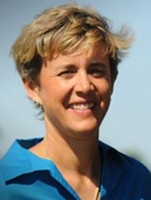
Stephanie L. Black, MIM, MBA, doctoral candidate, University of Texas at San Antonio
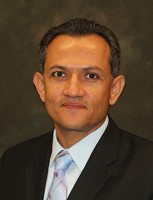
Julio C. Canedo, Ph.D., assistant professor of Management, Northern Michigan University
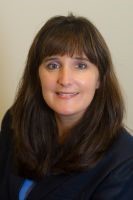
Kimberly M. Lukaszewski, Ph.D., associate professor of Management, State University of New York at New Paltz
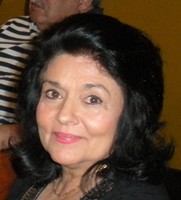
Dianna L. Stone, Ph.D., affiliate professor of Research, University at Albany, State University of New York
Hispanic owned businesses have increased rapidly, and there are now more than two million in our nation (U.S. Bureau of Census, 2010). One reason for this is that entrepreneurship provides a springboard for economic advancement and social integration of minorities (Wang & Li, 2007). Also, Hispanic businesses are important contributors to our economy, and have a number of key strengths (Starr, 2012). For instance, many Hispanics have connections to Latin American markets, and meet the needs of the growing Spanish-speaking customer base (Starr, 2012). In addition, Hispanics are adaptable, resilient, and have revitalized the economy of inner cities (Dana & Morris, 2007).
Despite these strengths, Hispanics, not unlike other entrepreneurs, face many challenges. This article reviews existing research on the challenges faced by Hispanic entrepreneurs, and offers some evidence-based guidelines for enhancing their success.
Click to read the entire article Challenges Facing Hispanic Entrepreneurs
Posted by Elena del Valle on May 8, 2014

In 1914, Congress designated the second Sunday in May as Mother’s Day thanks to the efforts of Anna Jarvis, who first organized observances in Grafton, West Virginia, and Philadelphia on May 10, 1908. Four million (4.1 to be exact) women between the ages of 15 and 50 gave birth in the past 12 months, according to U.S. Census Bureau, 2012 American Community Survey (Table B13002).
Almost half of women (47 percent) between 15 and 50 had no children. One in five women in the same age range had two children, 17 percent had one, 10 percent had three and about 5 percent had four or more, according to Fertility of American Women: 2010 (Detailed Tables, Table 1).
In 2012, the average age of women when they had their first child was 25.8 up from 25.6 years the previous year. There was a relatively large decline in births to women in their teen years and their twenties. Jacob and Sophia were the most popular baby names that year.
Less than one third of new mothers (29.5 percent) had a bachelor’s degree or higher while 84.6 percent of said they have at least a high school diploma (source: 2012 American Community Survey, American FactFinder, Table S1301).
In 2011, 35.7 percent of births were to unmarried women age 15 to 50. The metro areas with birth rates to unmarried mothers that were among the highest in the country included Flagstaff, Arizona (74.6 percent), Greenville, North Carolina. (69.4 percent), Lima, Ohio (67.5 percent), Myrtle Beach-North Myrtle Beach-Conway, South Carolina (67.4 percent) and Danville, Virginia. (67.3 percent).
In 2013, there were five million stay at home moms or about the same percent as in the previous two years. That year, almost one quarter (24 percent) of married couple families with children under 15 had a mother at home, up from 21 percent in 2000.
In 2011, Mother’s Day was described as the largest card sending and money sending occasion for United States Latinos of the year, according to a Univision article by Graciela Eleta. She believed that many Latinos who leave their mothers behind when they immigrate take advantage of Mother’s Day to send greeting cards and money transfers (funds are double those of an average month) to their mother in their country of origin.
In 2011, there were 63 births per 1,000 women ages 15 to 44, a low number, led by the drop in births among immigrant women. In 1957, by comparison, it peaked at 122.7 births per 1,000 women of childbearing age. The recent decline in birthrates was greatest, 25.7 percent, among Mexican American women and Mexico born women, according to a 2013 Herald Tribune article (Hispanic pregnancies fall in U.S. as women choose smaller families) that cites Pew Research Center data. In 2010, Hispanic birthrates reached the lowest level in 20 years, according to Pew data.
Posted by Elena del Valle on May 1, 2014
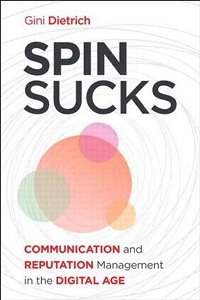
Spin Sucks
Photos: Arment Dietrich, Inc.
Communicating responsibly, honestly, openly and authentically rather than by “spinning” is the best long term approach to public relations, says Gini Dietrich, chief executive officer, Arment Dietrich, a marketing and communications company. In Spin Sucks: Communication and Reputation Management in the Digital Age (Que, $19.99), a 154-page softcover book published this year, she explains the reasons she advocates such a communication approach. Prior to this book, she co-authored Marketing in the Round with Geoff Livingston in 2012.
”
Spin Sucks is targeted toward business leaders who hire PR firms or communicators for their internal teams. Many business leaders understand they need PR, they know – instinctively – if it’s working, but they don’t really understand how it works. This book is meant to help them understand what we do, how to hold their teams accountable, and what kinds of metrics they can expect. That said, most of the readers so far are communicators,” the author said by email in reply to a question about the target audience and the reason she wrote her book. “I wrote Spin Sucks because there is a really bad perception people have about our industry. We are not liars or spin doctors. The big, big vision is to change the perception.”

Gini Dietrich, author, Spin Sucks
The book is divided into ten chapters and four sections: Tell Your Story Without Sex or Extortion; Scammers, Liars and Beggars; Your Brand; Your Customers; and Spin Sucks. A brand is controlled by customers in the outside world, she says in the book. Customers have a voice and they are not afraid to use it.
”
This is a marathon, not a sprint. Lots of business leaders think they can hire a PR firm and 90 days later, they’re famous and on every cover of every media outlet and their product or service is sold out. It doesn’t matter if you’re doing media relations, social media, content, lead generation, reputation management, or advertising, it takes time. Just like you can’t go out and run 26.2 miles without training, you have to prepare for success over a long period,” she said. “The very best thing you can do is always be ethical in how you handle yourself. Don’t take shortcuts. Don’t cheat. Don’t lie.”
In the last section, the author turns her attention toward the future speculating that communications will play a bigger role in customer service. She says it is essential to understand how customers want to interact with brands.

Click to buy Spin Sucks
Comments:
Filed Under: Books
Posted by Elena del Valle on May 1, 2014
Information provided by Event Partner

PRSA 2014 Sunshine District Conference
July 10-12, 2014
Hilton Naples, Florida
Florida’s premier public relations conference
July 10-12, 2014, Hilton Naples
Get ready to soak in some PR Paradise at the 2014 Sunshine District Conference in Naples. The premier event attracts top public relations professionals throughout Florida for the best networking and professional development around.
Presenters include national leaders in the public relations industry, and leading experts in media relations, social media, crisis communications, and more.
About the Conference
PRSA’s Sunshine District Conference is best known for its nationally recognized speakers and exceptional networking opportunities. At the conference, you will get insight into award-winning campaigns from nationally renowned speakers in public relations.
You will learn strategies and tactics used at McDonalds, Wells Fargo, Ringling Brothers, and top public relations firms.
You will also hear about lessons learned from U.S. Anti-Doping Agency case on Lance Armstrong, Sandy Hook Elementary tragedy, and the Casey Anthony trial.
Topics will include social media, content marketing, crisis communications, generational marketing, multicultural relations, reputation management, strategic communications, and much more.
Discover what Naples has to offer
Hilton Naples
5111 Tamiami Trail North
Naples, FL 34103
Naples has everything: courses that are a golfer’s dream, beautiful beaches for relaxation in a tropical paradise, shopping areas with the perfect blend of culture and luxury, and fine dining venues that are truly unique.
For more information on planning your time in PR Paradise, visit the Explore Naples tab on the PRSA Sunshine District Conference website http://www.prsasunshine.com/.























